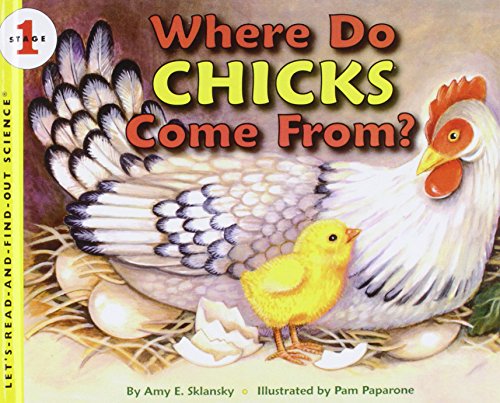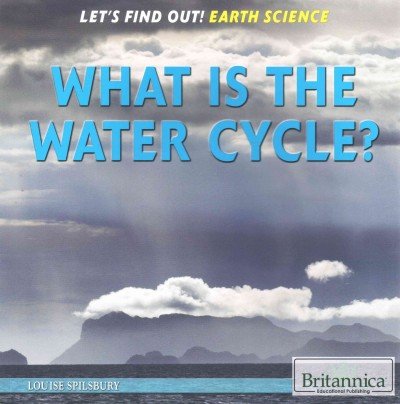-
From Seed to Pumpkin
Professor Wendy Pfeffer, James Graham Hale
Library Binding (Perfection Learning, Aug. 4, 2015)In the fall, pumpkins are everywhere: in the garden, in the supermarkets, and on doorsteps. But do you know how they grow from a tiny yellow seed to a pumpkin? In this classic Level 1 Let's-Read-and-Find-Out picture book, Wendy Pfeffer's lively text combines with James Graham Hale's beautiful watercolors to bring readers into the pumpkin patch to show them how little seeds transform into big pumpkins.Now rebranded with a new cover look, this book includes a find out more section with activities such as an experiment to show how plants use roots to drink water from the ground and a recipe for roasted pumpkin seeds. Both text and artwork were vetted for accuracy by Barbara J. Bromley, Mercer County Horticulturist.This is a Level 1 Let's-Read-and-Find-Out, which means the book explores introductory concepts perfect for children in the primary grades and supports the Common Core Learning Standards and Next Generation Science Standards. Let's-Read-and-Find-Out is the winner of the American Association for the Advancement of Science/Subaru Science Books & Films Prize for Outstanding Science Series. O
O
-
How Many Teeth?
Paul Showers, True Kelley
Paperback (HarperCollins, March 15, 1991)When you were a baby, you didn't have any teeth at all. Then as you grew, your teeth started to come in. First one, then two—and finally, twenty teeth in all! But you won't keep these teeth forever. First one, then two, will wiggle loose. Maybe you've lost some of your first teeth already. When the little teeth come out and the big teeth come in, everyone can see—you're growing up. This nonfiction picture book is an excellent choice to share during homeschooling, in particular for children ages 4 to 6. It’s a fun way to learn to read and as a supplement for activity books for children.How Many Teeth? is a Level One Let’s-Read-and-Find-Out Science title, which means the book explores more challenging concepts for children in the primary grades and supports the Common Core Learning Standards, Next Generation Science Standards, and the Science, Technology, Engineering, and Math (STEM) standards. Let’s-Read-and-Find-Out is the winner of the American Association for the Advancement of Science/Subaru Science Books & Films Prize for Outstanding Science Series. J
J
-
In the Rainforest
Kate Duke
Paperback (HarperCollins, Sept. 2, 2014)The rainforest is home to millions of plant and animal species. Some animals live high up in the trees, some crawl across the forest floor, and some tunnel underground, but they all depend on one another and the rain to survive. With colorful illustrations and fascinating diagrams from author-illustrator Kate Duke, In the Rainforest is a lively look at the most vibrant ecosystem on our planet. This nonfiction picture book is an excellent choice to share during homeschooling, in particular for children ages 4 to 6. It’s a fun way to learn to read and as a supplement for activity books for children.This is a Stage 2 Let's-Read-and-Find-Out Science book, which means the book explores more challenging concepts for children in the primary grades and supports the Common Core Learning Standards and Next Generation Science Standards. Let's-Read-and-Find-Out Science is the winner of the American Association for the Advancement of Science/Subaru Science Books & Films Prize for Outstanding Science Series. O
O
-
Sunshine Makes the Seasons
Franklyn M. Branley, Michael Rex
Paperback (HarperCollins, May 3, 2005)The sun shines down on us, giving warmth and light. But did you know that the sun also makes the seasons? As the earth makes one complete rotation around the sun every year, the seasons on the earth change -- from winter to spring to summer to fall and back to winter again. Find out how the light from the sun affects life on the earth for all living things in this look at the only star in our solar system. O
O
-
What Makes a Shadow?
Clyde Robert Bulla, June Otani
Paperback (HarperCollins, Jan. 30, 1994)When you run, your shadow runs. But you can never catch it!What makes a shadow? Where does it come from? When the sun is shining, everything has its own shadow -- trees, houses, cars, even clouds and planes way up in the sky. You have a shadow, too. As the sun sets, all shadows become part of a much larger one -- the night! With simple words and charming illustrations, Clyde Robert Bulla and June Otani explain how shadows are produced. Young readers will discover what makes the shadows they see and will be introduced to the fun of making shadows of their own. K
K
-
Where Did Dinosaurs Come From?
Kathleen Weidner Zoehfeld, Lucia Washburn
Paperback (HarperCollins, Dec. 21, 2010)Stegosaurus had spikes along its back.Triceratops had long, sharp horns.Tyrannosaurus rex was enormous. Millions and millions of years before the first people lived, these fascinating creatures ruled the Earth. To find out where they came from, you have to look way back in time . . . 3.5 billion years ago! Come explore the biggest mystery of all: Where did dinosaurs come from? Read and find out! This nonfiction picture book is an excellent choice to share during homeschooling, in particular for children ages 5 to 7 who are ready to read independently. It’s a fun way to keep your child engaged and as a supplement for activity books for children.This is a Level 2 Let's-Read-and-Find-Out Science book, which means the book explores more challenging concepts perfect for children in the primary grades and supports the Common Core Learning Standards and Next Generation Science Standards. Let's-Read-and-Find-Out is the winner of the American Association for the Advancement of Science/Subaru Science Books & Films Prize for Outstanding Science Series. O
O
-
Wiggling Worms at Work
Wendy Pfeffer, Steve Jenkins
Hardcover (HarperCollins, Dec. 23, 2003)Crawling through the dirt, worms are hard at work, helping plants to grow. Worms help the fruit and vegetables we eat by loosening the soil and feeding the plants. Read and find out about these wiggling wonders! This Stage 2 LRFO lets readers know about all the important ways worms work to help the environment—and people! This nonfiction picture book is an excellent choice to share during homeschooling, in particular for children ages 5 to 7. It’s a fun way to learn to read and as a supplement for activity books for children.This is a Level 2 Let’s-Read-and-Find-Out Science title, which means the book explores more challenging concepts for children in the primary grades and supports the Common Core Learning Standards, Next Generation Science Standards, and the Science, Technology, Engineering, and Math (STEM) standards. Let’s-Read-and-Find-Out is the winner of the American Association for the Advancement of Science/Subaru Science Books & Films Prize for Outstanding Science Series. O
O
-
Where Do Chicks Come From?
Amy E. Sklansky, Pamela Paparone
Library Binding (Paw Prints 2008-05-09, May 9, 2008)Have you ever seen a hen sitting on a nest of eggs? Have you wondered why she is sitting there? That hen is keeping her eggs warm until they are ready to hatch -- into chicks! But before a hen can lay her eggs, many things have to happen. In this simple introduction to the development of a fertilized egg into a chick, young readers are given a glimpse into the secret inner workings of the egg -- and the growing chick inside. N
N
-
Droughts
Melissa Stewart, Andre Ceolin
Paperback (HarperCollins, Aug. 1, 2017)The earth—and everything on it—needs water. But lately, it’s been unusually sunny, warm, and dry. The weather anchor announces that your area is experiencing a drought! Where do droughts happen? How do we know that we are in a drought? Why is rainfall important? Do droughts just affect people? Can scientists keep track of rainfall? Read and find out! This nonfiction picture book is an excellent choice to share during homeschooling, in particular for children ages 4 to 6. It’s a fun way to learn to read and as a supplement for activity books for children.This book is full of activities, like how to measure rainfall, how to visualize how much of the world’s water is freshwater, and how to create a cloud in a jar. It’s also full of graphic features perfect for visual learners, like a diagram of the water cycle, and rich vocabulary bolded throughout the text, with a glossary. This is a Level 2 Let’s-Read-and-Find-Out Science title, which means the book explores more challenging concepts for children in the primary grades and supports the Common Core Learning Standards, Next Generation Science Standards, and the Science, Technology, Engineering, and Math (STEM) standards. Let’s-Read-and-Find-Out is the winner of the American Association for the Advancement of Science/Subaru Science Books & Films Prize for Outstanding Science Series. M
M
-
Snakes Are Hunters
Patricia Lauber, Holly Keller
Paperback (HarperCollins, Jan. 22, 2002)A classic Level 2 Let's-Read-and-Find-Out Science title that introduces readers to the world of snakes, updated with new jacket art, book design, trim size, and Find-Out-More page. This nonfiction picture book is an excellent choice to share during homeschooling, in particular for children ages 4 to 6. It’s a fun way to learn to read and as a supplement for activity books for children.Slithering, scaly, and sly—snakes are fascinating reptiles. They are also hunters. Find out how snakes survive in the wild, and how they capture their prey.This is a Level 2 Let’s-Read-and-Find-Out Science title, which means the book explores more challenging concepts for children in the primary grades and supports the Common Core Learning Standards, Next Generation Science Standards, and the Science, Technology, Engineering, and Math (STEM) standards. Let’s-Read-and-Find-Out is the winner of the American Association for the Advancement of Science/Subaru Science Books & Films Prize for Outstanding Science Series. M
M
-
What Makes a Blizzard?
Kathleen Weidner Zoehfeld, Maddie Frost
Paperback (HarperCollins, Jan. 2, 2018)All blizzards are snowstorms, but not all snowstorms are blizzards! What is the difference? How much snow falls during a blizzard? How fast are the winds? How cold does it get during a blizzard? Read and find out! This nonfiction picture book is an excellent choice to share during homeschooling, in particular for children ages 4 to 6. It’s a fun way to learn to read and as a supplement for activity books for children.Written by acclaimed children’s science writer Kathleen Weidner Zoehfeld and with beautiful illustrations by Maddie Frost, What Makes a Blizzard comes chock-full of visual aids like charts, sidebars, and hands-on activities—including how to keep a winter weather journal and how to observe what a snowflake really looks like. This is a Level 2 Let’s-Read-and-Find-Out Science title, which means the book explores more challenging concepts for children in the primary grades and supports the Common Core Learning Standards, Next Generation Science Standards, and the Science, Technology, Engineering, and Math (STEM) standards. Let’s-Read-and-Find-Out is the winner of the American Association for the Advancement of Science/Subaru Science Books & Films Prize for Outstanding Science Series. O
O
-
What Is the Water Cycle?
Louise Spilsbury
Paperback (Britannica Educational Pub, Jan. 1, 2014)Explains the basics of the water cycle, including condensation, precipitation, and how to conserve water. V
V